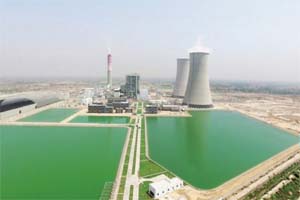
Pakistan plans to increase domestic coal-fired power
Pakistan plans to quadruple its domestic coal-fired capacity to reduce power generation costs and will not build new gas-fired plants in the coming years, as it seeks to ease a crippling foreign-exchange crisis. A shortage of natural gas, which accounts for over a third of the country's power output, plunged large areas into hours of darkness last year. A surge in global prices of liquefied natural gas (LNG) after Russia's invasion of Ukraine and an onerous economic crisis had made LNG unaffordable for Pakistan. "LNG is no longer part of the long-term plan," Pakistan Energy Minister Khurram Dastgir Khan, adding that the country plans to increase domestic coal-fired power capacity to 10 gigawatts (GW) in the medium-term, from 2.31 GW currently.
|

Car sales plunge 43pc
The entire auto sector, barring the bus segment, turned in a depressed performance as the sales of cars plunged by 43 per cent followed by 42pc dip in trucks, 19pc in jeeps and pickups, 52.6pc in tractors and 32.5pc in two- and three-wheelers during the first seven months of the current fiscal year. Contrary to past years, car sales and production in January plunged to 5,723 and 6,021 units from 13,758 and 13,780 in December 2022. Usually, the demand grows sharply in the first month of the new calendar as customers prefer to buy the latest models. During the first seven months of FY23, car production and sales registered a steep decline of 38.6pc and 43pc to 77,101 and 74,933 units from 125,507 and 131,759 units in the same period last year. Rising prices of vehicles, high markup rates, curbs on financing, plant shutdown amid a shortage of parts and delays in delivery of vehicles contributed to the huge fall in car sales.
|
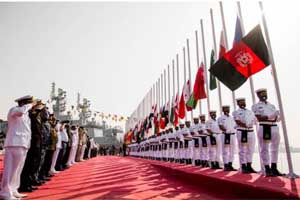
Together for Peace - Aman 23
The eighth edition of the exercise with the motto ‘Together for Peace’ was held from Feb 10 to 14, involving participation of over 50 countries with ships, aircrafts, Special Operation Forces/ EOD Marines teams and observers. The exercise was divided into two phases: harbour and sea. The harbour phase involves activities such as seminars, operational discussions, professional demonstrations, international get-togethers and pre-sail planning of evolution at sea. The sea phase included tactical manoeuvres, exercises related to maritime security such as anti-piracy and counterterrorism, search and rescue, gunnery firings and air defence exercises. The highlight of the sea phase will be the international fleet review, which will be witnessed by national and foreign dignitaries. Over 50 countries participated in the five-day drills. The navy has been conducting the Aman exercise every two years since its beginning in 2007.
|

Qatar to Buy Shares in OGDCL and PPL
Qatar is said to have agreed to consider Pakistan’s offer to buy shares in Oil and Gas Development Company Limited (OGDCL) and Pakistan Petroleum Limited (PPL), as well as sell Mirage-2000 fighter. This was revealed at the latest inter-ministerial meeting presided over by Syed Tariq Fatimi, Special Assistant to the Prime Minister on Coordination, as a follow-up to the Prime Minister’s visit to Qatar in August. During his recent visit to Qatar, the Finance Minister offered the Qatari side the opportunity to purchase stakes/shares in OGDCL and PPL. The Qataris agreed to consider and continue discussions on the proposal.
|
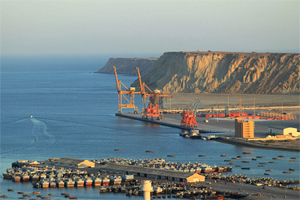
Gwadar port dredging to cost five times more
The government has approved the maintenance dredging of a navigational channel of Gwadar Port with an escalated cost of Rs4.7 billion – a drastic increase from Rs1bn estimated in June 2022 – to avoid any mishap to cargo ships or imposition of penalties. The navigation channel of the port was last cleared in 2014-15 but had since developed sedimentation of clay, sand and mud and gravelly coarse sand at most of the places. This was resulting in the diversion of bigger ships as the port could handle around 30,000 dead weight tonnage (DWT) ships rather than the designed capacity of allowing 50,000 DWT. Official sources said the key factor behind the cost escalation was that the Gwadar Port Authority (GPA) and the Ministry of Maritime Affairs had developed the dredging project in June last year at Rs1bn on guesstimates in emergency circumstances when a couple of 50,000DWT cargo ships had to be diverted due to navigational challenges. However, the costs had to be increased based on a proper study conducted by Pakistan Navy followed by competitive bidding. The project is to take off immediately. The project approved by the government envisaged maintenance dredging of a 4.7-km-long navigational channel, basin and berthing area of Gwadar port. Its internal navigational channel and turning basin design depth is 13.8 meters for safe navigation of deep draft vessels and the berthing area and outer channel is dredged to 14.5 meters to permit safe berthing and sufficient clearance from the bottom in low tides. The channel is designed for the navigation of 50,000 DWT ships during all weather.
|
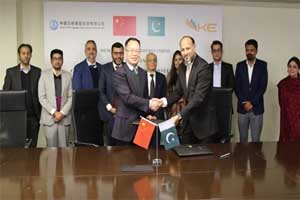
KE, Chinese giant sign MoU for clean energy
Three Gorges Group of China and K-Electric signed a memorandum of understanding (MoU) to collaborate in the development of about 1,000MW of renewable energy and hydropower projects across the country including Azad Jammu & Kashmir. The MOU was signed by KE’s CEO and, CEO of China Three Gorges South Asia Investment Ltd (CTGSAIL) for “providing clean, affordable, and sustainable power for people of Pakistan including K-Electric’s growing base of over 3.4 million customers”, according to a statement. Under the MoU, the two sides agreed to collaborate on exploring renewable energy including hydro projects across the country. Both companies will also work to develop a roadmap for the installation of grid-scale Battery Energy Storage Systems into KE’s network. The exclusive rights of existing distribution companies including KE are expiring over the next 3-6 months that would allow open access to electricity producers, buyers and consumers to trade electricity from and to various sources and locations anywhere in the country after paying wheeling charges to the national grid operator — National Transmission & Despatch Company. This would also allow new power companies to enter the market and challenge through competition the existing distributors. Therefore, the KE is looking into opportunities to collaborate with private entities for setting up renewable energy projects including wind, solar and hydropower plants across the country.
|
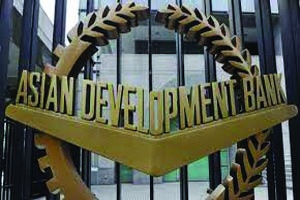
ADB again offers funding for ML-1
Amid delays in financing arrangements with China for the $10 billion Karachi-Peshawar railway line (Main Line-1), the Asian Development Bank (ADB) has re-emerged as a funding contender for the mega project. Planning Secretary told a group of journalists that the ADB had recently shown interest in financing the project. “As of now, we are still pursuing a part of the project with China,” he said, agreeing that it was a big challenge. The Manila-based multilateral had earlier been elbowed out of the project on the insistence of China, which wanted to execute the project single-handedly as part of the multibillion-dollar China-Pakistan Economic Corridor (CPEC). The two governments, however, could not finalise the financing agreement for the project for almost six years, and the 1,872-kilometer railway line project, considered Pakistan’s logistic backbone, went through cost escalations and CPEC itself ran into snags amid changing political environment. As the project’s infrastructure deteriorated further with negligible maintenance and last year’s massive floods, the new government attempted to revive Main Line-1 in phases, starting with a $3.7bn first phase, mostly in Sindh.
|
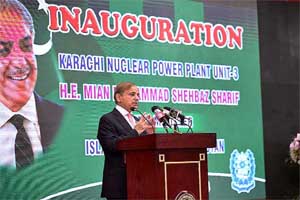
PM inaugurates K-3 nuclear power plant in Karachi
Prime Minister Shehbaz Sharif on Feb 2, inaugurated K-3, the third unit of Karachi Nuclear Power Plant (KANUP), which will produce 1,100 megawatts of electricity. The project has been completed with assistance from China. Addressing the occasion, the prime minister said K-3 was a step forward in cooperation with Pakistan’s trusted friend China. He congratulated the scientists and workers of Pakistan and China which led to the completion of the project. Shehbaz said in view of the $27 billion energy import bill, Pakistan required alternative and cheaper sources of energy including solar, wind, hydel and nuclear. Director General International Atomic Energy Agency (IAEA) Rafael Mariano Grossi, in a video message, emphasised the importance of using safe use of nuclear energy as Pakistan faced challenges of climate change. With the introduction of K-3 into the national grid, the share of nuclear power in the energy mix of Pakistan will exceed 10 per cent. A new era in the nuclear power development programme of Pakistan commenced with the signing of the 'Agreement for Cooperation in Peaceful Uses of Nuclear Energy' between the governments of China and Pakistan in 1986. However, the first concrete step was taken 30 years ago when China National Nuclear Corporation (CNNC) and Pakistan Atomic Energy Commission (PAEC) signed the contract for the construction and installation of a 325-megawatt Pressurised Water Reactor (PWR) at Chashma on December 31, 1991. The cooperation strengthened with the construction of three more nuclear power plants at Chashma Nuclear Power Generation Station (CNPGS) site. The contract for the construction of two more units having a generation capacity of 1100 megawatts each near Karachi was signed on February 18, 2013.
|
|

© 2023 Alpine Marine Services Private Limited
all rights reserved
|
|
|